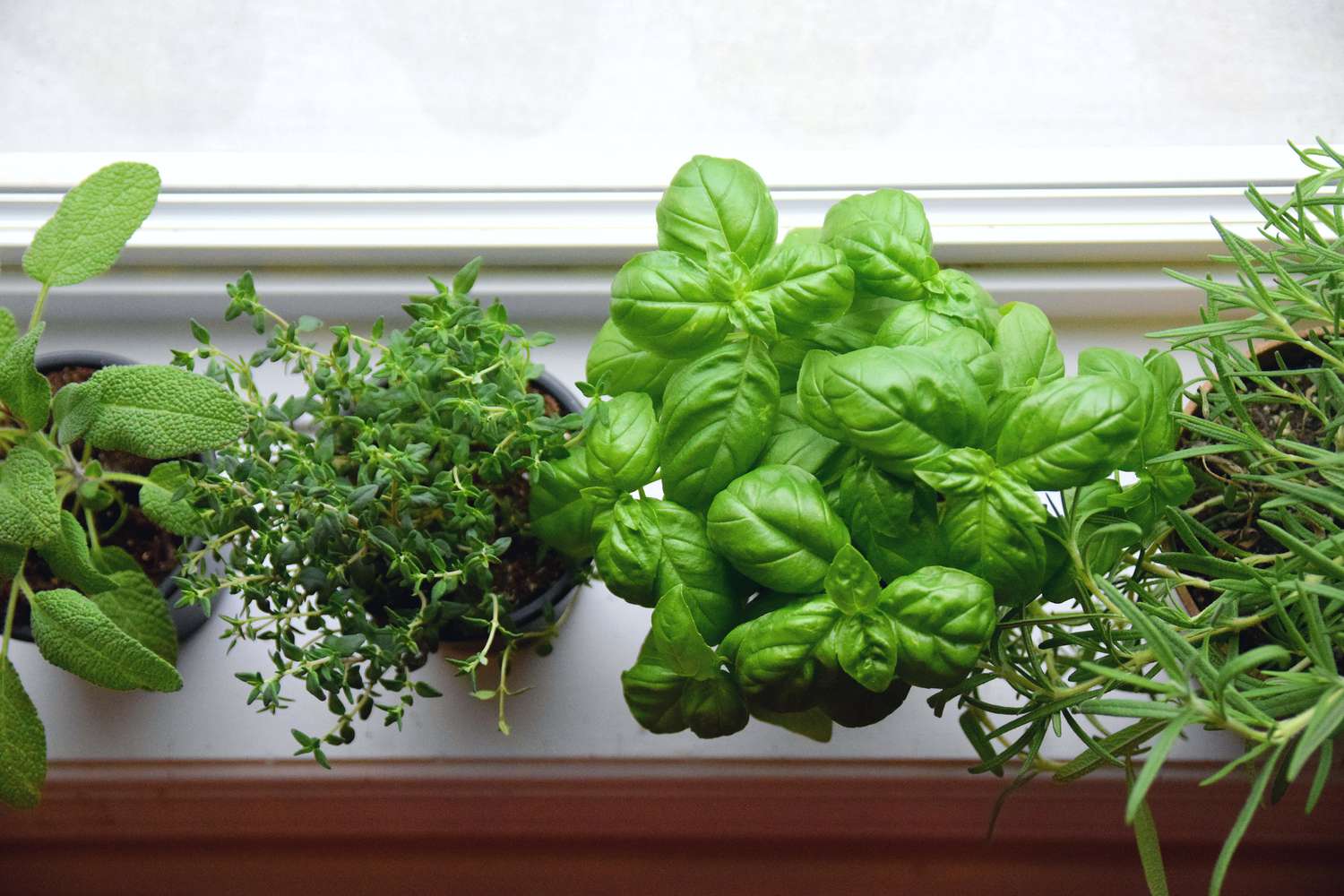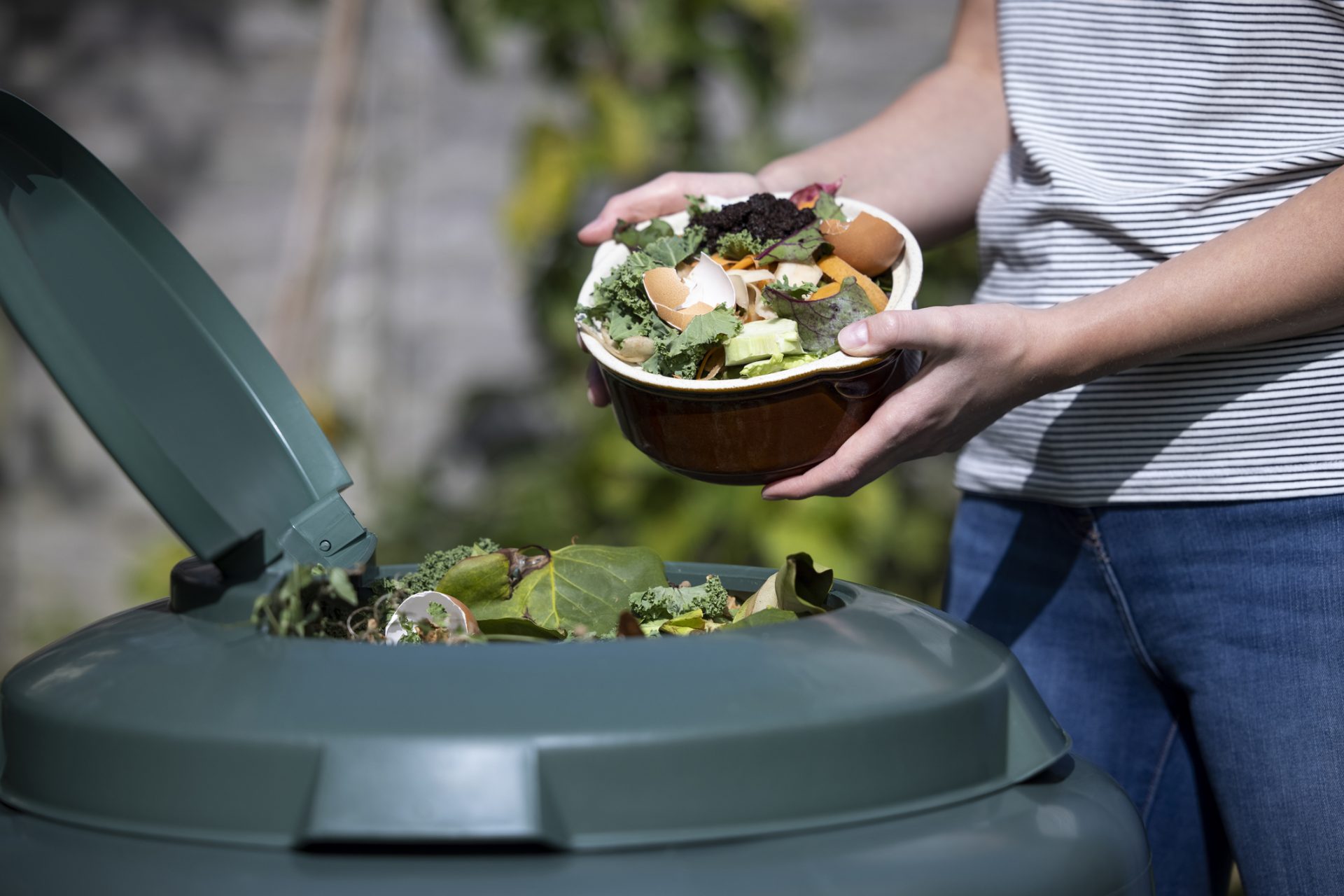Home>Gardening News and Trends>Latest News>How To Sell Herbs From Home


Latest News
How To Sell Herbs From Home
Modified: January 22, 2024
Discover the latest news on how to start selling herbs from the comfort of your home. Learn proven strategies and tips to maximize your profits.
(Many of the links in this article redirect to a specific reviewed product. Your purchase of these products through affiliate links helps to generate commission for Chicagolandgardening.com, at no extra cost. Learn more)
Table of Contents
Introduction
Welcome to a world of aromatic herbs and the opportunity to turn your passion for gardening into a thriving business. Selling herbs from the comfort of your own home not only allows you to share your love for nature and its healing properties, but it also provides a unique and rewarding entrepreneurial venture.
With the increasing demand for natural remedies, organic products, and culinary herbs, there has never been a better time to explore the world of herb selling. Whether you have a spacious backyard or a small balcony, you can easily grow and sell a variety of herbs.
In this comprehensive guide, we will walk you through the step-by-step process of setting up a successful herb business. From choosing the right herbs to sell to marketing and shipping, we will cover every aspect to help you establish a profitable home-based venture.
Before diving into the details, it’s important to note that selling herbs from home requires dedication, patience, and a strong work ethic. It’s not simply about growing and packaging herbs, but also about providing excellent customer service and building a loyal clientele. So, if you’re ready to embark on this exciting journey, let’s get started!
Choosing the Right Herbs to Sell
When it comes to selling herbs from home, it’s essential to carefully select the herbs that will appeal to your target market. Consider the following factors to ensure you choose the right herbs:
- Market demand: Research and identify herbs that are in high demand. Explore market trends, consult with local nurseries, and even engage in online surveys to understand what herbs customers are looking for.
- Growing conditions: Consider the environmental conditions in your area and choose herbs that will thrive in your climate. Some herbs, like basil and parsley, prefer warm weather, while others, such as mint and lavender, can tolerate cooler temperatures.
- Usability: Focus on herbs that have versatile uses. Culinary herbs like thyme, rosemary, and cilantro are always popular, as they can be used in a variety of dishes. Medicinal herbs, such as chamomile and echinacea, are also in high demand due to their healing properties.
- Unique varieties: Differentiate yourself from the competition by offering unique or rare herb varieties. This can attract customers who are looking for something special and may be willing to pay a premium for it.
- Personal interest: Consider your personal affinity for certain herbs. Selling herbs that you enjoy growing and working with will bring a genuine passion to your business, which can positively impact your success.
Remember to strike a balance between popular herbs and unique varieties. This will allow you to cater to a wide range of customers and stand out in the market.
Once you have identified the herbs you want to sell, conduct thorough research on their cultivation requirements, including soil type, sunlight exposure, and water needs. This will help you provide the best conditions for your herbs to flourish.
In the next section, we’ll delve into the process of growing herbs at home, ensuring that you have a steady supply of fresh, quality herbs for your customers.
Growing Herbs at Home
Growing herbs at home is not only a rewarding and enjoyable experience, but it also ensures a constant supply of fresh and high-quality herbs for your business. Follow these steps to successfully grow herbs:
- Location: Choose a suitable location for your herb garden. Most herbs thrive in well-draining soil and require at least six hours of sunlight per day. If you don’t have an outdoor space, consider growing herbs in containers or vertical gardens on windowsills or balconies.
- Soil preparation: Prepare the soil by removing any weeds, rocks, or debris. Mix compost or organic matter into the soil to improve its fertility and drainage. Herbs prefer slightly alkaline soil with a pH level between 6 and 7.
- Selection and planting: Start by selecting healthy herb seedlings or seeds from reputable nurseries. Follow the planting instructions for each herb and space them accordingly. Ensure proper spacing to allow air circulation and prevent overcrowding.
- Watering: Herbs have different water requirements, so it’s essential to understand the needs of each herb. Generally, herbs prefer slightly moist soil, but be careful not to overwater, as it can lead to root rot. Water the herbs thoroughly and allow the soil to dry out slightly between watering sessions.
- Fertilizing: Apply a balanced organic fertilizer to the herbs every few weeks during the growing season to promote healthy growth. Avoid using chemical fertilizers, as they can affect the flavor and medicinal properties of the herbs.
- Pest and disease management: Monitor your herb garden regularly for pests and diseases. Keep an eye out for aphids, caterpillars, and fungal infections. Use organic pest control methods, such as neem oil or companion planting, to protect your herbs.
- Pruning and harvesting: Regularly prune your herbs to encourage bushier growth and prevent them from becoming leggy. Harvest the herbs when they have reached an optimal size and just before they flower for the best flavor and potency. Use sharp shears to avoid damaging the plants.
Remember to label your herbs to avoid mix-ups and confusion. This will also help you educate your customers about the specific attributes and uses of each herb.
Growing herbs is a continuous learning process, so don’t be afraid to experiment and try new techniques. In the next section, we’ll discuss the importance of properly harvesting and drying your herbs to maintain their freshness and potency.
Harvesting and Drying Herbs
Properly harvesting and drying your herbs is crucial to preserve their flavors, aromas, and medicinal properties. Follow these guidelines to ensure the quality and longevity of your herbs:
- Harvesting: Harvest herbs when they have reached their peak of freshness and just before they flower. Early morning, after the dew has dried, is the ideal time for harvesting. Use sharp scissors or shears to cut the herbs above a set of healthy leaves, leaving enough foliage for the plant to continue growing.
- Washing: Gently wash the harvested herbs to remove any dirt or debris. Use cold water and be careful not to bruise or damage the leaves. Pat them dry with a clean towel or allow them to air dry naturally.
- Drying methods: There are several ways to dry herbs, including air drying, oven drying, and using a dehydrator. Air drying is the most traditional method and works well for low-moisture herbs like rosemary, thyme, and oregano. Hang small bundles of herbs upside down in a cool, well-ventilated area away from direct sunlight. For herbs with higher moisture content like basil and mint, oven drying or using a dehydrator may be more appropriate.
- Oven drying: Preheat your oven to the lowest temperature (around 100-150°F or 38-65°C). Spread the herbs on a baking sheet lined with parchment paper and place them in the oven. Leave the oven door slightly open to allow moisture to escape. Check the herbs regularly and remove them once they are completely dry and crumbly.
- Dehydrator: If you have a dehydrator, follow the manufacturer’s instructions for drying herbs. Set the temperature to the lowest setting and place the herbs on the trays in a single layer. Allow them to dry for the recommended time, usually between 1 to 4 hours.
- Storage: Once the herbs are completely dry, remove the leaves from the stems and crush them gently to release their essential oils. Store the dried herbs in airtight containers, such as glass jars or resealable bags, away from heat, moisture, and sunlight. Label the containers with the herb names and dates of drying to keep track of their freshness.
Remember to dry and store different herbs separately, as their flavors and aromas can mix if stored together. Properly dried and stored herbs can last for up to a year without losing their potency.
In the next section, we’ll discuss the importance of packaging and labeling your herbs to create an attractive and informative product for your customers.
Packaging and Labeling
The way you package and label your herbs plays a crucial role in attracting customers and providing them with the necessary information about your products. Follow these tips to ensure effective packaging and labeling:
- Choose appropriate containers: Select containers that are suitable for storing and preserving the freshness of your herbs. Consider using glass jars, tin containers, or resealable bags that are airtight and light-resistant. This will help extend the shelf life of your herbs.
- Create visually appealing packaging: Design packaging that is visually appealing and reflects the natural beauty of your herbs. Consider using eco-friendly materials or incorporating your brand logo or unique artwork to make your products stand out.
- Include informative labels: Ensure that each package is labeled with the herb’s name, botanical name (if applicable), date of harvesting, and any relevant information, such as culinary or medicinal uses. Include clear instructions on how to store and use the herbs.
- Highlight the quality and organic nature: If your herbs are organically grown or sourced from organic suppliers, make sure to highlight this on the packaging. Many customers prefer organic products, so emphasizing this aspect can be a selling point.
- Add branding elements: Consider adding your business name, logo, and contact information to the packaging. This creates a professional and recognizable brand identity, making it easier for customers to remember and recommend your products.
- Include safety warnings: If certain herbs have potential side effects or interactions with medications, include appropriate safety warnings on the packaging to inform customers and promote responsible use of the herbs.
- Packaging sizes: Offer your herbs in different packaging sizes to cater to a variety of customer needs. Providing smaller quantities for first-time buyers or those interested in specific herbs can be a cost-effective option, while larger sizes can attract bulk buyers and those looking for a long-term supply.
Remember, packaging and labeling are not only about aesthetics but also about providing customers with relevant information to make informed choices. Invest time and effort into creating attractive and informative packaging that reflects the quality and value of your herbs.
In the next section, we’ll discuss how to set up an online store to reach a wider audience and increase your selling potential.
Setting Up an Online Store
In today’s digital age, having an online store is essential to reach a wider customer base and increase your herb selling potential. Follow these steps to set up your own online herb store:
- Choose an e-commerce platform: Research and select an e-commerce platform that suits your needs and budget. Popular options include Shopify, WooCommerce, and BigCommerce. Consider factors such as ease of use, customization options, payment gateways, and scalability.
- Design your store: Customize your online store to reflect your brand identity. Choose a visually appealing theme, create a user-friendly layout, and ensure that your store is optimized for both desktop and mobile devices. Make it easy for customers to navigate and find the herbs they are looking for.
- Upload product listings: Create detailed product listings for each herb you are selling. Include high-quality photos, accurate descriptions, pricing information, and any additional details that can help customers make informed purchasing decisions.
- Set up payment and shipping options: Integrate secure payment gateways, such as PayPal or Stripe, to facilitate smooth transactions. Decide on your shipping methods and rates, and clearly communicate them to customers. Offer options like local pickup or delivery to provide flexibility.
- Add customer reviews and testimonials: Display customer reviews and testimonials on your product pages to build trust and credibility. Encourage satisfied customers to leave feedback and share their positive experiences.
- Implement SEO strategies: Optimize your online store for search engines by incorporating relevant keywords in your product titles, descriptions, and content. Use meta tags, headings, and alt text for images to improve your store’s visibility in search engine results.
- Create a blog or educational content: Enhance your online store’s value by providing educational content related to herbs, such as recipes, medicinal uses, or cultivation tips. This will not only drive traffic to your store but also position you as an authority in the field.
- Promote your online store: Utilize various online marketing strategies to drive traffic to your website. This can include social media marketing, email newsletters, collaborations with influencers, and participating in online herb communities or forums.
Regularly monitor your online store’s performance and make necessary adjustments based on customer feedback and analytics. Continuously improve and update your store to provide the best user experience possible.
In the next section, we’ll explore effective marketing and promotional strategies to help you grow your herb business and attract more customers.
Marketing and Promoting Your Herb Business
Marketing and promoting your herb business are essential to attract customers and create awareness about your products. Here are some effective strategies to help you market and promote your herb business:
- Social media marketing: Utilize popular social media platforms, such as Instagram, Facebook, and Pinterest, to showcase your herbs, share gardening tips, and engage with your audience. Create visually appealing content, including photos and videos, and leverage relevant hashtags to reach a wider audience.
- Content marketing: Create informative and engaging content related to herbs, such as blog posts, videos, or podcasts. Share valuable information about the culinary and medicinal uses of herbs, growing and harvesting tips, and herb-infused recipes. This positions you as an expert in the field and helps build trust with potential customers.
- Email marketing: Build a mailing list of interested customers and send regular newsletters or updates about new herbs, promotions, and herb-related news. Provide value in your emails by including educational content, exclusive discounts, or personalized recommendations.
- Collaborate with influencers: Partner with influential bloggers, herbalists, or chefs who align with your brand values. They can promote your herb business through their platforms, increasing your reach and credibility.
- Networking: Attend local farmers’ markets, herb festivals, or community events to connect with potential customers and other herb enthusiasts. Build relationships with local businesses, such as restaurants, cafes, or wellness centers, to explore collaborative opportunities.
- Offer special promotions: Run limited-time promotions or discounts to encourage new customers to try your herbs. Create bundles or gift sets, or offer free samples with orders, to entice customers to purchase from your business.
- Customer loyalty program: Implement a loyalty program to reward repeat customers. Offer incentives such as discounts on future purchases, exclusive access to new herbs, or free shipping to encourage customer loyalty.
- Utilize local directories and listings: List your herb business in relevant local directories, such as online business directories or herbalist associations. This helps customers in your area easily find and connect with your business.
Consistency and persistence are key in marketing and promoting your herb business. Continuously evaluate the effectiveness of your strategies, track the results, and make adjustments when necessary.
In the next section, we will discuss the process of taking and fulfilling orders to ensure smooth transactions and customer satisfaction.
Taking and Fulfilling Orders
Efficiently taking and fulfilling orders is crucial to provide a seamless and satisfactory experience for your customers. Follow these steps to ensure smooth transactions and prompt delivery:
- Offer multiple ordering options: Provide various channels for customers to place their orders. This can include your online store, phone orders, or even a dedicated email address for inquiries and orders. Make it easy for customers to reach out and place their orders.
- Streamline your ordering process: Simplify the ordering process as much as possible. Optimize your online store’s checkout process to be user-friendly and intuitive. Clearly display payment options and ensure that customers can easily specify quantity and shipping details.
- Clearly communicate order confirmation: Send automated order confirmation emails to customers as soon as their orders are received. Include all relevant order details, such as item names, quantities, pricing, and shipping information. This reassures customers that their order has been successfully placed.
- Package orders with care: Take extra care when packaging orders to ensure that the herbs are protected during transit. Use appropriate packaging materials, such as bubble wrap or packing peanuts, to prevent damage. Include a packing slip or invoice with each order.
- Label packages properly: Clearly label packages with the customer’s address, contact details, and any additional instructions for delivery. Provide a return address in case of any issues with the delivery.
- Choose reliable shipping methods: Select reputable shipping carriers that offer reliable and trackable services. Consider factors such as shipping rates, delivery speed, and insurance options. Share tracking information with customers so they can monitor the status of their packages.
- Follow up with customers: Send follow-up emails or request feedback from customers after their orders are delivered. This provides an opportunity to address any concerns and gather testimonials or reviews to build credibility.
- Handle returns and exchanges: Establish a clear policy for returns or exchanges in case customers are not satisfied with their orders. Make the process as hassle-free as possible to maintain customer satisfaction. Communicate your policy clearly on your website or in your order confirmation emails.
- Monitor inventory: Regularly update your inventory to ensure that you have sufficient stock of each herb. Implement inventory management systems or software to avoid overselling or running out of popular herbs.
- Provide exceptional customer service: Respond promptly to customer inquiries, resolve any issues or concerns, and go the extra mile to provide exceptional customer service. This will help build trust and loyalty, leading to repeat business and positive word-of-mouth recommendations.
By implementing an efficient order management system and providing excellent customer service, you can ensure hassle-free transactions and create a positive experience for your customers.
In the next section, we’ll discuss the importance of effective shipping and handling practices to deliver your herbs safely and on time.
Shipping and Handling
Shipping and handling are critical aspects of your herb business to ensure that your products are delivered safely and on time. Follow these best practices for effective shipping and handling:
- Choose appropriate packaging materials: Use sturdy, well-sealed packaging materials that can withstand the rigors of shipping. Consider using padded envelopes, corrugated boxes, or bubble wrap to protect your herbs from damage during transit.
- Securely pack your herbs: Ensure that your herbs are securely packed within the shipping container. Use packaging materials such as paper shreds or foam peanuts to provide cushioning and prevent movement during transit.
- Label packages accurately: Clearly label each package with the recipient’s address, contact details, and any additional delivery instructions. Include a return address as well in case the package needs to be returned or if there are any issues with delivery.
- Choose reliable shipping carriers: Select reputable shipping carriers that offer reliable and trackable services. Consider factors such as shipping rates, delivery speed, and insurance options. Communicate the estimated delivery timeframe to your customers to manage their expectations.
- Insurance and tracking: For valuable or delicate shipments, consider purchasing insurance to protect against loss or damage during transit. Provide customers with tracking information so they can monitor the progress of their package.
- Optimize packaging size and weight: To minimize shipping costs, optimize the size and weight of your packages. Use accurate measurements and weights to calculate shipping costs and choose the most cost-effective shipping method.
- International shipping considerations: If you plan to ship herbs internationally, research customs regulations and any restrictions on importing or exporting certain herbs. Ensure that you comply with all relevant laws and provide necessary documentation for smooth customs clearance.
- Labeling requirements: Familiarize yourself with any labeling requirements or regulations specific to shipping herbs. This can include proper labeling of hazardous or restricted herbs, or adhering to specific labeling standards for organic products.
- Handling fragile herbs: If you sell delicate herbs that require extra care during shipping, clearly indicate this on the packaging. Add instructions for handling fragile items, and include any necessary precautions to prevent damage.
- Monitor and track shipments: Keep track of all shipments and monitor their progress. Stay in touch with your customers and promptly address any shipping delays or issues that may arise.
By following these shipping and handling practices, you can ensure that your customers receive their herb orders in excellent condition and within the expected timeframe.
In the next section, we’ll discuss the importance of providing excellent customer service to ensure satisfaction and build long-term relationships with your customers.
Providing Excellent Customer Service
Providing excellent customer service is essential for the success and growth of your herb business. It not only ensures customer satisfaction but also builds long-term relationships and generates positive word-of-mouth recommendations. Follow these tips to provide outstanding customer service:
- Be responsive: Respond to customer inquiries, messages, and emails promptly and courteously. Aim to address their questions or concerns within 24 hours or sooner. Show genuine interest in helping them and provide thorough and helpful responses.
- Personalize interactions: Treat each customer as an individual and make them feel valued. Address them by name and tailor your recommendations or suggestions based on their specific needs or preferences. Personalized interactions create a more personalized and memorable experience.
- Be knowledgeable and informative: Acquire in-depth knowledge about the herbs you sell and their various uses. Be ready to provide information, such as culinary tips, medicinal benefits, or growing advice. This positions you as a credible resource and helps customers make informed decisions.
- Handle complaints with professionalism: If a customer has a complaint or is dissatisfied with their purchase, address the issue promptly and professionally. Listen attentively, empathize with their concerns, and offer solutions or appropriate compensation. Strive to turn a negative experience into a positive one.
- Exceed expectations: Go above and beyond to exceed customer expectations. Surprise them with small gestures, such as including a handwritten thank-you note or a free sample with their order. These little gestures can leave a lasting impression and foster loyalty.
- Collect and respond to feedback: Encourage customers to provide feedback on their experience with your herb business. This can be through surveys, reviews, or social media interactions. Embrace both positive and constructive feedback and use it to improve your products and services.
- Build a loyal customer base: Implement a customer loyalty program to reward repeat customers. Offer incentives such as discounts, exclusive offers, or early access to new herbs. Engage with your customers on social media and through email newsletters to nurture long-term relationships.
- Continuous improvement: Regularly evaluate your processes and seek ways to improve customer service. Analyze customer feedback, identify pain points, and implement necessary changes to deliver an exceptional customer experience.
- Train and empower your team: If you have a team working with you, train them in the importance of excellent customer service. Empower them to handle customer inquiries and issues with professionalism and empathy. Ensure that everyone is aligned with your customer service values and goals.
Remember, providing excellent customer service is not just about resolving issues or addressing complaints, but also about building genuine connections with your customers and creating a positive and memorable experience.
In the next section, we’ll conclude our guide on selling herbs from home and recap the key points discussed throughout the article.
Conclusion
Congratulations on completing this comprehensive guide on selling herbs from home! We have covered various aspects of starting and running a successful herb business, from selecting the right herbs to providing excellent customer service. Let’s quickly recap the key points:
First, we emphasized the importance of choosing the right herbs to sell by considering market demand, growing conditions, usability, unique varieties, and personal interest. Growing your herbs at home was discussed next, highlighting the importance of location, soil preparation, selection and planting, watering, fertilizing, pest management, pruning, and harvesting.
Properly harvesting and drying herbs is essential to maintain their flavors, aromas, and medicinal properties. We provided guidelines for harvesting at the right time, washing, and different drying methods such as air drying, oven drying, and using a dehydrator.
Packaging and labeling your herbs is crucial for creating an attractive product and providing customers with important information. We discussed choosing appropriate containers, visually appealing packaging, informative labels, highlighting quality and organic nature, adding branding elements, and including safety warnings.
Setting up an online store helps you reach a wider audience, and we covered choosing an e-commerce platform, designing your store, uploading product listings, setting up payment and shipping options, and utilizing strategies like social media marketing, content marketing, email marketing, collaborating with influencers, and networking.
Taking and fulfilling orders must be done efficiently to provide a seamless experience for customers. We discussed offering multiple ordering options, streamlining the process, confirming orders, packaging orders with care, labeling packages properly, choosing reliable shipping methods, and handling returns and exchanges.
Shipping and handling practices are important to ensure that your herbs are delivered safely and on time. Our tips included choosing appropriate packaging materials, securely packing herbs, labeling packages accurately, choosing reliable shipping carriers, providing insurance and tracking, optimizing packaging size and weight, and monitoring shipments.
Providing excellent customer service is key to customer satisfaction and loyalty. We highlighted tips such as being responsive, personalizing interactions, being knowledgeable and informative, handling complaints professionally, exceeding expectations, collecting and responding to feedback, building a loyal customer base, continuous improvement, and training and empowering your team.
By following these guidelines and putting in the effort, you can establish and grow a successful herb business from the comfort of your home. Remember to be passionate, dedicated, and always strive to provide the best products and customer service.
Wishing you great success in your herb-selling journey!










